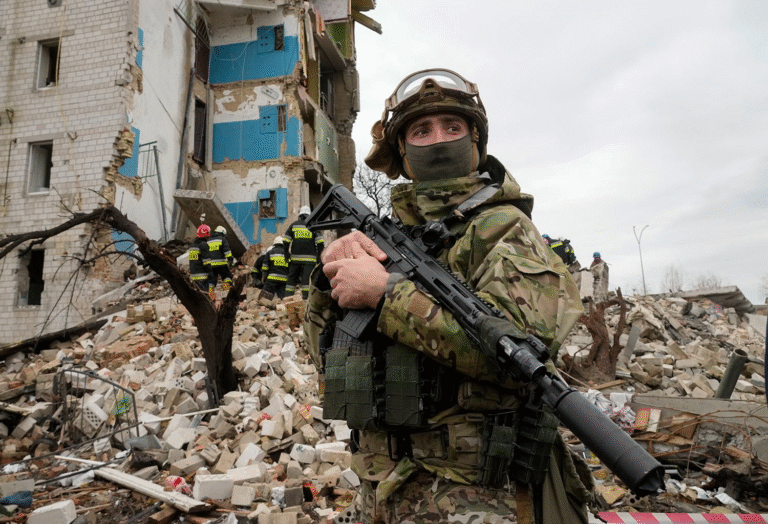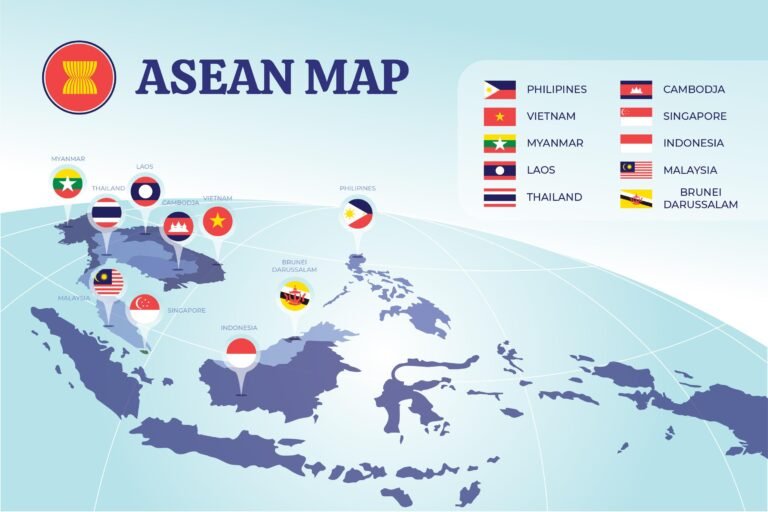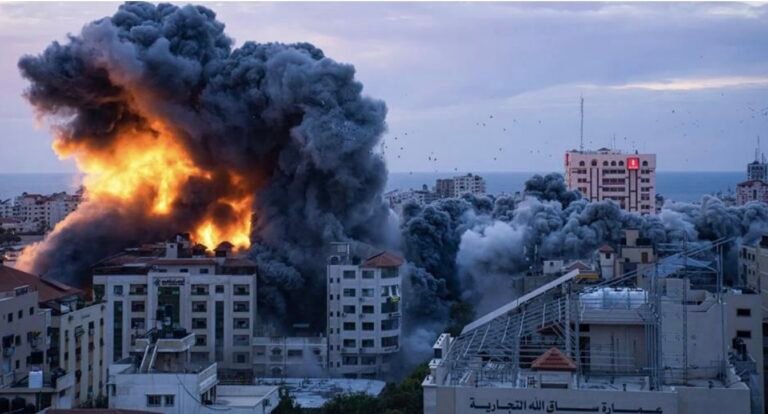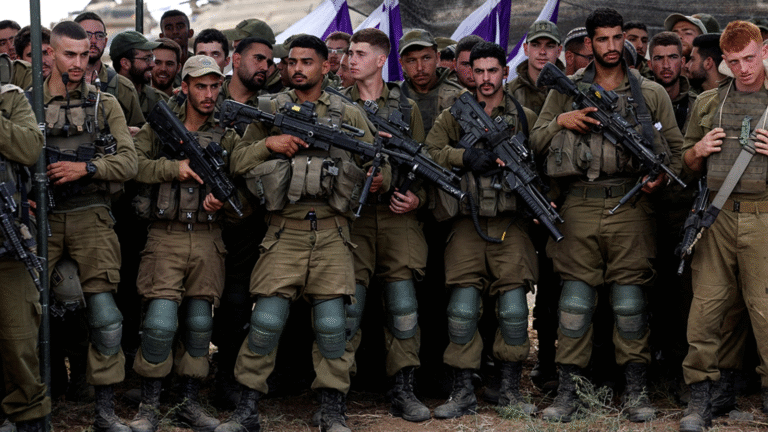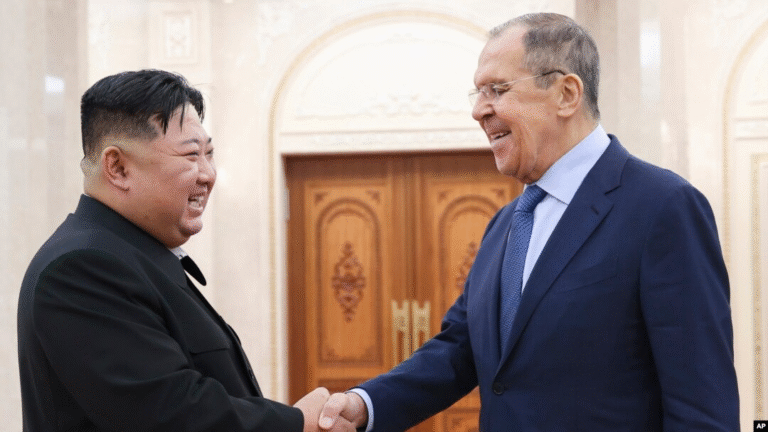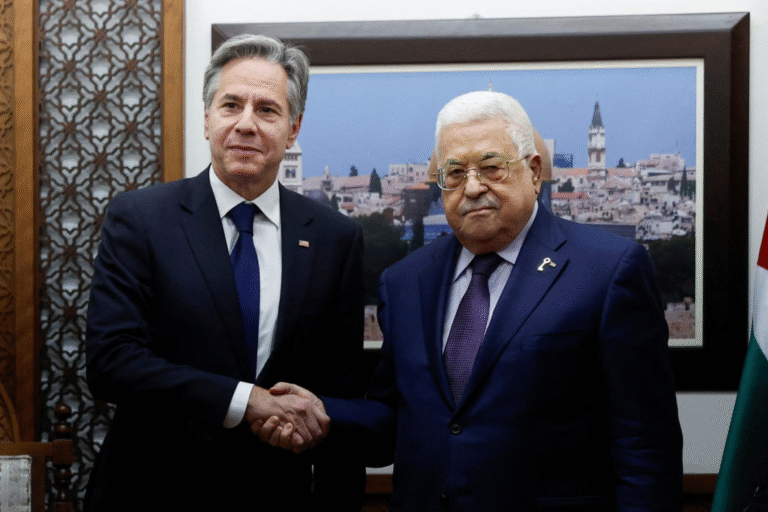
The patches worn by the Georgian Legion. Photo Credit: Eurasianet.org
Nicholas Tocco
The America-Eurasia Center
www.EurasiaCenter.org
Eurasia Brief
America-Ukraine Program
International Security Program
America-Eurasia Business Coalition
www.usebc.org
Complex Intricacies of Ukraine’s Foreign Militias
The Various Foreign Militias Aiding Ukraine
Conflicting Political Ambitions and Goals for the Region
There are many foreign paramilitary organizations aiding Ukraine against Russia, each of these
organizations having their own personal goals for the area in which they are fighting. One such group
is the Russian Volunteer Corps (RVC). The RVC “was founded by a far-right Russian national last
August and comprises Russians who have been fighting in and for Ukraine against their own country.”1
Its current claim to fame is its assault on the Belgorod region in Russia during May 2023.2 While Russia
claims Ukraine’s involvement is evident in the attack, the government of Ukraine naturally denied these
allegations. However, the RVC claims that they carried out the attack with Ukrainian support. A claim
that has been backed up by analysts, who argued that Ukrainian intelligence played some form of
support in the Belgorod attack.3 Currently, the exact number of the organization is currently unknown,
but it is estimated that membership ranges anywhere from 30 to 150 soldiers. The soldiers that carried
out the attack answer to the Civic Council, an organization of Russian emigrants from the various
republics that make up Russia and desire to achieve self-determination for its people. Under the
leadership of Anastasia Sergeyeva, the Council’s main objective is to raise money and train soldiers.4
After its attack on Belgorod, the most notorious element of the RVC is its blatant endorsement of NeoNazism and white supremacy as embodied by its founder, Denis Kapustin. Kapustin makes his bigoted
views no secret, calling himself White Rex, only allows ethnic Russians to become members of the
group, and frequently making anti-immigrant posts on the social media platform Telegram.5 As if this
were not horrific enough, Kapustin has been in direct contact with known American Neo-Nazis
Christopher Polhaus, a notorious transphobe, and Robert Rundo, a participant in the now infamous
Charlottesville rally.6 This has created a rather complicated situation for the parties involved. Kapustin
has expressed his desire to see the overthrow of the Russian as the most effective means of preserving
Ukrainian sovereignty, which fuels Russian accusations of the RVC being Ukrainian-backed militants.
To make matters even worse for the West, the RVC weapons used to attack Russian were Americanmade ones meant for protecting Ukrainian soil.7 Combined this with evidence of Kapustin’s ties to
American fascists, and Russian propaganda claims of “de-Nazifying” Ukraine suddenly carry more
weight in the international community. However, the likelihood of foreign Neo-Nazis traveling to
Ukraine is highly unlikely as they would have to travel through NATO member nations, which would
result in American security officials being contacted. Furthermore, the Neo-Nazis that are in Ukraine
have seen very little front-line action. However, this does not mean that there are not legitimate concerns
regarding the possibility of these Neo-Nazis returning to their home countries and using their training
to spread their hateful beliefs more effectively. Regardless, it is undeniably a problem that Ukraine
must take action against, as it could prevent Ukraine from being accepted into the EU or NATO.8

Members of the Kastus Kalinouski regiment practicing tourniquet tying. Photo Credit: Sam Skove for Foreign Policy.
The RVC is not the only foreign paramilitary group in Ukraine that seeks oust the authoritarian
ruler of its home nation. Founded in March 2022, the Kastuś Kalinoŭski Regiment is a Belarusian
militia dedicated to helping Ukraine bring about the downfall of Putin’s rule over Russia as its members
see Russia as a threat to both the security of Ukraine and Belarus. However, it should be noted that the
members of the regiment are not far-right extremists, but rather more moderate nationalists who believe
that by helping Ukraine overthrow Putin, they will “put an end to the history of the existence of
Lukashenko’s regime in Belarus.”9 It is the authoritarianism of Lukashenko that serves as the impetus
for the swelling of the regiment’s numbers. Many of the troops of the Kastuś Kalinoŭski Regiment are
so fearful of Lukashenko that only agree to give interviews under the precondition of being able to use
fake aliases as due to fleeing conscription, their family members back in Belarus could be in danger. In
fact, some of the fighters of the regiment lied to their families about where they were in order to
guarantee the safety of their loved ones. So intense was the political repression of the Lukashenko that
many members of the regiment had been apolitical before the war. This initial lack of deliberate political
beliefs sets it further apart from the RVC.10 The regiment takes its name from Kastuś Kalinoŭski, the
leader of an 1860s uprising in what is now Belarus and Lithuania against the Russian Empire. For these
revolutionary deeds, Kalinoŭski is revered as a hero amongst the people of Belarus. The regiment is
divided into two battalions: Volat and Litvin. Each of these battalions is named after a fallen member
of the regiment.11 The soldiers of the regiment wish to continue the revolutionary legacy for which they
were named as some desire the violent removal of Lukashenko, although they acknowledge that the
likelihood of this is highly unlikely without foreign assistance.12 In the event the Kastuś Kalinoŭski
Regiment is successful in freeing Belarus from tyranny, its members hope that Belarus will be able to
join the European Union and NATO. The reason for this is the belief that the military technology and
weaponry provided by NATO is essential to ensure the safety of smaller nations like Belarus.13
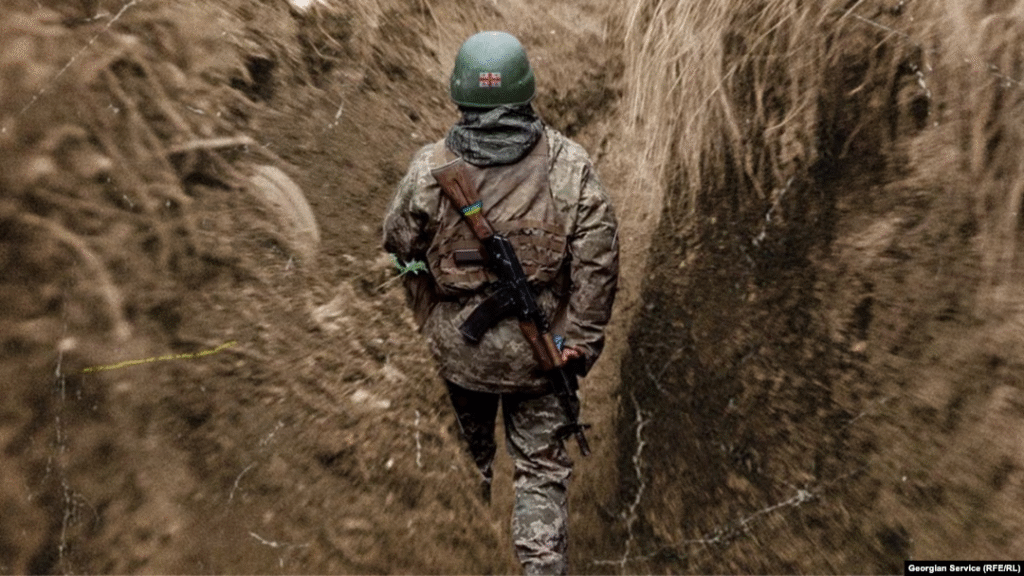
A Georgian fighter in Ukraine. Georgian Service Photo Credit: RFE/RL
For some foreign fighters in Ukraine, they see the beleaguered nation as the first step in freeing
their own homeland from a Russian occupation similar to Ukraine. In a preview of the Russian invasion
of Ukraine, in 2008, the nation of Georgia would be threatened by Russian-backed separatists in South
Ossetia and Abkhazia. Roughly 15 years later, parts of Georgia are still under Russian occupation. “For
many in Georgia, Russia’s invasion of Ukraine evokes memories of their country’s own conflict with
their powerful neighbor and former overlord.”14 The commander of the Georgian Legion, Mamuka
Mamulashvili is the living embodiment of this belief, with his war against Russia beginning in Georgia
when he was 14. This war against Russia is a family affair, with his own father accompanying him to
Ukraine before eventually passing away from diabetes and a sister who currently serves in the Georgian
Parliament. Mamuka’s men became the first unit of foreign fighters to become a part of the regular
Ukrainian military. In other words, the Georgian Legion has much more explicit support than the RVC.
In the leadup to the outbreak of full-scale war with Russia, the Georgian Legion began imparting its
combat experience onto thousands of civilians and soldiers. The first battle between Georgian Legion
and Russian forces during the invasion of Ukraine was at Hostomel Airport, which was located near
the Ukrainian capital of Kyiv. Mamuka was surprised by the rapid arrival of Russian helicopters,
estimating that there were 33 of them. It is argued by some that this airport battle was the key to Kyiv’s
successful defense. Mamuka described how his men were under equipped to the point that they
eventually ran out of ammo. For the Georgian Legion, witnessing the horrors of Russian helicopters
deliberately laying waste to civilians was a horror that they were all too familiar with. Setting it further
apart from radical organizations such as the RVC is the Georgian Legion’s commitment to rigorously
weeding out any recruits that have extremist beliefs.15 Currently, membership in the legion ranges from
800-1,000 fighters, with half of them being ethnically Georgian while the other half is a mixture of
different nationalities.16 The Georgian Legion is mainly responsible for reconnaissance and special
operations. Life on the front lines for the Georgian Legion is difficult as they are subject to airstrikes
by drones and thus desire their own artillery and air defense systems for protection. As such, like all of
the other foreign paramilitary organizations in Ukraine, the Georgian Legion greatly desires Western
support as it is deemed to be critical for success.17 The Russian government has expressed great rage at
the Georgian people’s continued defiance of its rule, as in July 2023, it charged 70 members of the
legion in absentia. Mamulashvili himself was charged with the recruitment and training of
‘“mercenaries.’”18
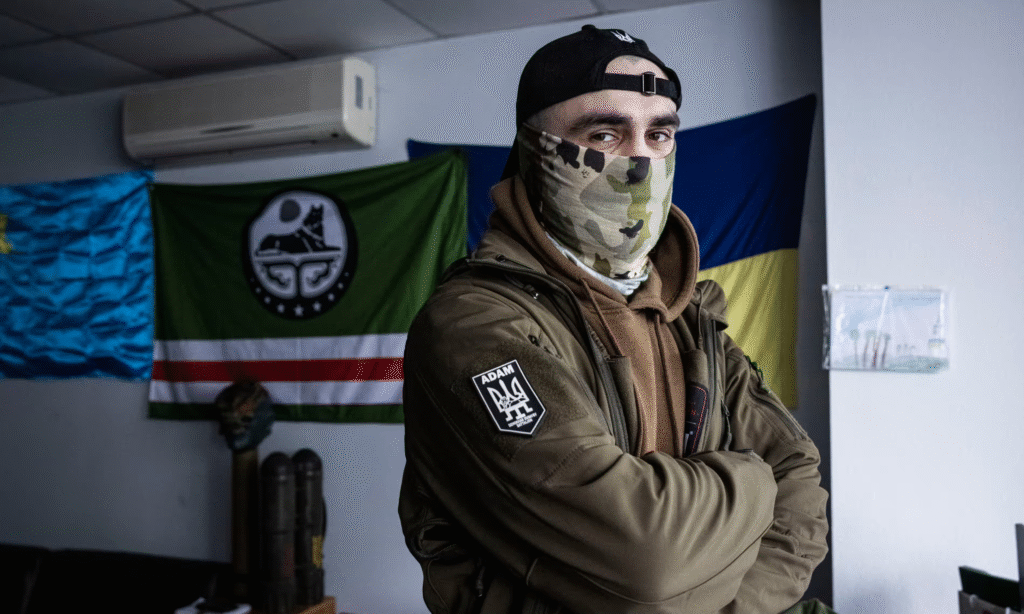
Volunteer Maga poses for a photo in the Dzhokhar Dudayev Battalion base in Kyiv.
Photo Credit: Ed Ram via the Guardian
Similar to the Georgians, the people of Chechnya also feel a sense of solidarity with Ukraine due to
having their homeland occupied. The Chechen Republic of Ichkeria was formed in 1991 following
the dissolution of the USSR, fighting two wars to ensure its survival only to be brought under boot
and heel by a then up-and-coming Vladimir Putin in 1999.19 During these wars, the entire nation of
Chechnya was destroyed, with the capital city Grozny being wiped off the map and a quarter of a
million civilians tragically losing their lives.20 Ever since 2014 with the conflict in the Donbas, many
Chechen militants have been present in Ukraine and have only increased their numbers since the
outright invasion by Russia. One of these militant groups is the Dzhokhar Dudayev Battalion. Named
after the first president of Chechnya, its members stand in opposition to Putin and his Chechen
lapdog, Ramzan Kadyrov. Kadyrov, the current ruler of Chechnya, is held in contempt for the cruelty
he inflicts upon the population and attempts to whitewash it through the use of TikTok. Many
members of the battalion are political refugees of the Kadyrov, feeling grateful that Ukraine allows
them to freely practice their Muslim faith. The battalion is revered for its presence in combat, having
aided in the sabotaging of Russian attacks on Kyiv and the liberation of Izium.21 Currently, there are
approximately 50 Chechens in the Dudayev Battalion, with Crimean Tatars also making up a sizable
portion of the battalion as they are also an ethnic group that has suffered at the hands of Russia. These
men have volunteered “because they are all too familiar with the violence wrought by Russia’s
government.”22 Much like the Georgian Legion and the Kastuś Kalinoŭski Regiment, the troops of the
Dzhokhar Dudayev Battalion have expressed a desire for more Western support as they desperately in
need of a means to counter the Russian artillery they are facing in Bakhmut. Further complicating
their plight is the lack of funding as the Ukrainian government, forcing them to rely on donations for
survival. The most likely explanation for the lack of funding might be the prevailing dislike of
Chechens amongst the general Ukrainian populace due to a combination of Islamophobic propaganda
spread by Russia and the unpopularity of the Kadyrov regime. However, despite these odds, the men
of the battalion hope that their heroics on the battlefield will inspire the current generation of
Ukrainians to be more supportive of them.23 In addition to having overcome a lack of support from
Ukrainians, the Dudayev Battalion must also overcome a lack of support from their fellow Chechens.
These divisions are rooted in Chechnya’s wars against Russia in the 1990s. Muslim Madiyev, the
deputy commander of the Dzhokhar Dudayev Battalion, had served as the vice president of the
security council of President Aslan Maskhadov. Madiyev and his men are backed by the Presidium of
the Ichkerian Government, a Chechen diaspora group in-exile, which has asked Muslims from around
the world to enlist in the Dudayev Battalion These Muslims communities, or jammats, are rooted in
the Chechen wars, with religion and loyalty to commanders being the basis for units. Other Chechen
groups include Akhmed Zakayev’s Cabinet of Ministers, which is effectively committed to
nationalism and loyalty to Zelensky through the Separate Special Purpose Battalion (OBON). In
opposition to Zakayev, Zhaloudi Saralyapov’s Ichkerian Parliament endorses the Sheikh Mansur
Battalion, another militant Chechen group in Ukraine. The leaders of these groups have all been
attempting to fill the political void following the loss of Chechnya’s independence. Simultaneously,
from the ashes of the now defunct independent Chechnya, arose a new generation of Chechens that
believed in an amalgamation of Islamic conservatism and secular nationalism. It is this new
generation that detests Zakayev as they came of age during Kadyrov rather than the dissolution of the
USSR. The divisions amongst the Chechens are further complicated due to politicians all claiming
that their preferred Chechen militant group is the one true successor to the Ichkerian armed forces,
although none of the Chechen militant groups engage in this behavior themselves. However, despite
all these divisions, the Chechens are united in their opposition to defeat Russia and see their
homeland free once more as evidenced by the presence of all Chechen militant groups fighting
together in Bakhmut.24
One can clearly see how these foreign paramilitary groups are similar and different from one another.
All of them wish to see the removal of Putin, with Chechens and Belarusians also desiring the removal
of the collaborationist rulers of their homeland. Some like RVC and the Georgian Legion, while vastly
different in terms of politics, are similar in terms of internal unity and vision for what they want out of
this war. Others, such as the Dzhokhar Dudayev Battalion, stand in opposition to other Chechen militant
groups. There is also the issue of how these different militant groups feel about another and the thought
working together, even if it is indirectly. The RVC, for obvious reasons, probably detests the members
of the Dudayev Battalion, who understandably feel the same way. Perhaps the Georgian Legion and
Kastuś Kalinoŭski Regiment may view the Dudayev Battalion more favorably, or maybe they have
succumbed to Russia’s bigoted propaganda. Regardless, these groups have made sure that different
groups of people from around the world will have a stake in the outcome of the Ukraine conflict.
- Tom Balmforth and Max Hunder , “Who Are the Freedom of Russia Legion and Russian Volunteer Corps?,” ed. Timothy Heritage , Reuters, June 5, 2023, https://www.reuters.com/world/europe/who-are-armed-fightersrussias-belgorod-region-2023-06-05/. ↩︎
- Balmforth and Hunder, “Who Are the Freedom of Russia Legion and Russian Volunteer Corps?” ↩︎
- Yuliya Talmazan, “Who Are the Anti-Putin Groups behind the Dramatic Raid into Russia?,” NBCNews.com, May 26, 2023, https://www.nbcnews.com/news/world/belgorod-raid-russian-volunteer-corps-freedom-russia-legionrcna86168. ↩︎
- Sergey Satanovskiy, “Who Are the Russian Volunteers Fighting for Ukraine? ,” dw.com, May 25, 2023,
https://www.dw.com/en/who-are-the-russian-volunteers-fighting-for-ukraine/a-65722771. ↩︎ - Talmazan, “Who Are the Anti-Putin Groups behind the Dramatic Raid into Russia?” ↩︎
- Ben Makuch, “Russian Militia Has Links to American Neo-Nazi and Anti-Trans Figures,” The Intercept, July 7, 2023, https://theintercept.com/2023/07/08/american-neo-nazis-ukraine-war/. ↩︎
- Talmazan, “Who Are the Anti-Putin Groups behind the Dramatic Raid into Russia?” ↩︎
- Makuch, “Russian Militia Has Links to American Neo-Nazi and Anti-Trans Figures.” ↩︎
- “About The Kastuś Kalinoŭski Regiment,” The Kastuś Kalinoŭski Regiment, accessed September 15, 2023,
https://bel.army/en/about/. ↩︎ - Sam Skove, “Meet the Belarusian Regiment Fighting for Ukraine,” Foreign Policy, February 20, 2023,
https://foreignpolicy.com/2023/02/20/russia-war-ukraine-belarus-kastus-kalinouski-regiment-soldiers-fighting/. ↩︎ - “About The Kastuś Kalinoŭski Regiment.” ↩︎
- Skove, “Meet the Belarusian Regiment Fighting for Ukraine, ↩︎
- “About The Kastuś Kalinoŭski Regiment.” ↩︎
- Nino Tarkhnishvili, “The Georgian Fighters Who Went to Ukraine to Finish Their Own War,”
RadioFreeEurope/RadioLiberty, August 7, 2023, https://www.rferl.org/a/georgia-war-russia-continuedukraine/32538061.html. ↩︎ - Luke Coffey and Mamuka Mamulashvili, “Conversation from the Front Lines with Commander of the Georgian Legion…,” 2-5, Hudson Institute , December 15, 2022,
https://s3.amazonaws.com/media.hudson.org/Transcript+A+Conversation+from+the+Front+Lines+with+Commander+of+the+Georgian+Legion+Mamuka+Mamulashvili.pdf. ↩︎ - Tarkhnishvili, “The Georgian Fighters Who Went to Ukraine to Finish Their Own War.” ↩︎
- Coffey and Mamulashvili, “Conversation from the Front Lines with Commander of the Georgian Legion …,” 6. ↩︎
- “Over 70 Georgians Prosecuted by Russia in Absentia for Fighting in Ukraine,” Civil Georgia, July 29, 2023,
https://civil.ge/archives/553611. ↩︎ - Harold Chambers , “Chechens Fight with Ukrainians against Russia,” New Lines Magazine, April 5, 2023,
https://newlinesmag.com/reportage/chechens-fight-with-ukrainians-against-russia/. ↩︎ - Patrick Reevell and Ivan Pereira, “Chechen Volunteer Fighters Back up Ukraine’s Russian Resistance ,” ABC News, April 13, 2023, ↩︎
- Daniel Boffey, “‘We’re Fighting for a Free Future’: The Chechen Battalions Siding with Kyiv,” The Guardian, January 30, 2023, https://www.theguardian.com/world/2023/jan/30/chechen-dzhokhar-dudayev-battalion-kyiv-ukraineputin-ramzan-kadyrov. ↩︎
- Reevell and Pereira, “Chechen Volunteer Fighters Back up Ukraine’s Russian Resistance.” ↩︎
- Boffey, “‘We’re Fighting for a Free Future’: The Chechen Battalions Siding with Kyiv.” ↩︎
- Chambers , “Chechens Fight with Ukrainians against Russia, ↩︎
